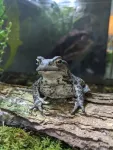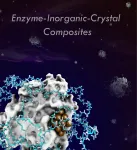Citizen science to investigate and control disease-transmitting mosquitoes
As well as being annoying because of their bites, mosquitoes can be the carriers of pathogens. Rising temperatures worldwide are facilitating their spread. This is the case with the tiger mosquito, Aedes albopictus, and other species in Spain and around the world. As these species spread, the science dedicated to combating the problems associated with them develops. This is how Mosquito Alert was set up, a citizen science project coordinated by the Centre for Research on Ecology and Forestry Applications, the Blanes Centre for Advanced Studies and the Universitat Pompeu Fabra to which UOC researchers have contributed.
This project brings together information collected by volunteer citizens, who use their mobile phones to capture mosquito images as well as that of their breeding sites in public spaces. Along with the photo the location of the observation and other necessary information to help in the identification of the species are also collected. This data is then processed by entomologists and other experts to confirm the presence of a potentially disease-carrying species and alert the relevant authorities. In this way, with a simple photo and an app, citizens can help to generate a map of the mosquitoes' distribution all over the world and help to combat them.
"Mosquito Alert is a platform set up in 2014 to monitor and control disease-carrying mosquitoes," says Gereziher Adhane, who worked on the study with Mohammad Mahdi Dehshibi and David Masip. "Identifying the mosquitoes is fundamental, as the diseases they transmit continue to be a major public health issue. "The greatest challenge we encountered in identifying the type of mosquito in this study was due to images taken in uncontrolled conditions by citizens", he comments. He explains, the image was not shot in close-up, and it contains additional objects, which could reduce the performance of the proposed method. Even if the images were taken up close, they were not necessarily at an angle that entomologists could quickly identify, or because the images were taken of killed mosquitos, the mosquito body patterns were deformed.
"Entomologists and experts can identify mosquitoes in the laboratory by analysing the spectral wave forms of their wing beats, the DNA of larvae and morphological parts of the body," Adhane points out. "This type of analysis depends largely on human expertise and requires the collaboration of professionals, is typically time-consuming, and is not cost-effective because of the possible rapid propagation of invasive species. Moreover, this way of studying populations of mosquitoes is not easy to adapt to identify large groups with experiments carried out outside the laboratory or with images obtained in uncontrolled conditions," he adds. This is where neural networks can play a role as a practical solution for controlling the spread of mosquitoes.
Deep neural networks, cutting-edge technology for identifying mosquitoes
Neural networks consist of a complex combination of interconnected neurons. Information is entered at one end of the network and numerous operations are performed until a result is obtained. A feature of neural networks is that they can be trained through supervised, semi-supervised, or unsupervised manner to process data and guide the network about the type of result being sought. Another important characteristic is their ability to process large amounts of data, such as those submitted by volunteers participated in Mosquito Alert project. The neural network can be trained to analyse images, among other data types, and detect small variations that could be difficult for experts to easily perceive.
"Manual inspection to identify the disease-carrying mosquitoes is costly, requires a lot of time and is difficult in settings outside the laboratory. Automated systems to identify mosquitoes could help entomologists to monitor the spread of disease vectors with ease", the UOC researcher emphasizes.
Conventional machine learning algorithms are not efficient enough for big data analysis like the data available in Mosquito Alert platform, because it contains many details and there is a high degree of similarity between the morphological structures of different mosquito species. However, in the study, the UOC researchers showed that deep neural networks can be used to distinguish between the morphological similarities of different species of mosquito, using the photographs uploaded to the platform. "The neural network we have developed can perform as well or nearly as well as a human expert and the algorithm is sufficiently powerful to process massive amounts of images," says Adhane.
How does a deep neural network work?
"When a deep neural network receives input data, information patterns are learned through convolution, pooling, and activation layers which ultimately arrive at the output units to perform the classification task," the researcher tells us, describing the complex process hidden behind this model.
"For a neural network to learn there has to be some kind of feedback, to reduce the difference between real values and those predicted by the computing operation. The network is trained until the designers determine that its performance is satisfactory. The model we have developed could be used in practical applications with small modifications to work with mobile apps," he explains. Although there is still much development work to do the researcher concludes that "using this trained network it is possible to make predictions about images of mosquitoes taken using smartphones efficiently and in real time, as has happened with the Mosquito Alert project."
INFORMATION:
This UOC research project supports sustainable development goal (SDG) 3: Ensure health and well-being for all, at every stage of life
Mosquito Alert is a project coordinated by the CREAF (Centre de Recerca Ecològica i Aplicacions Forestals), UPF (Universitat Pompeu Fabra) ICREA (Institución Catalana de Investigación y Estudios Avanzados) and CEAB-CSIC (Centro de Estudios Avanzados de Blanes).
Reference article
Adhane, Gereziher, Mohammad Mahdi Dehshibi, and David Masip. 2021. "A Deep Convolutional Neural Network for Classification of Aedes Albopictus Mosquitoes". IEEE Access 9: 72681-90. https://doi.org/10.1109/ACCESS.2021.3079700.
UOC R&I
The UOC's research and innovation (R&I) is helping overcome pressing challenges faced by global societies in the 21st century, by studying interactions between technology and human & social sciences with a specific focus on the network society, e-learning and e-health. Over 500 researchers and 51 research groups work among the University's seven faculties and two research centres: the Internet Interdisciplinary Institute (IN3) and the eHealth Center (eHC).
The United Nations' 2030 Agenda for Sustainable Development and open knowledge serve as strategic pillars for the UOC's teaching, research and innovation. More information: research.uoc.edu. #UOC25years





